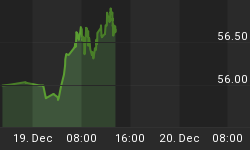"Fla. jobless rate reaches record 12.2 pct in Feb" is the headline from an Associated Press report of 26 March. In short, one out of eight workers is unemployed. Per the author of this article, M. Merzer, in excess of 1.1 million Floridians are out of work. Rather than creating jobs, the Obama Regime and a dysfunctional Congress have focused on nationalizing the U.S. health care system. The articles on the health care nationalization have tended to miss the obvious. Given the higher expenses and write offs being announced by major U.S. businesses, the first to feel the impact of Obamacare will be those being laid off because of it.
When Scotty beams us to the other side of the world, we find a far different situation. In China, businesses are facing a shortage of workers and have been raising wages. "Defying Global Slump, China Has Labor Shortage" by K. Bradsher from New York Times, 26 February 2010, reports,
"Just a year after laying off millions of factory workers, China is facing an increasingly acute labor shortage. As American workers struggle with near double-digit unemployment, unskilled factory workers here in China's industrial heartland are being offered signing bonuses."
And more recently we read, "Guangdong raises minimum wage by 20% amid inflation fears" by E. Tsui from Financial Times, 19 March 2010,
"Factories struggle to attract enough workers. The Chinese province of Guangdong(near Hong Kong), the country's biggest export centre, announced yesterday that it would raise the minimum wage by an average of more than 20 per cent."

Chinese government, at least for the moment, seems to have got economic policy working in the right direction. At the same time, the Obama Regime continues to prefer destroying wealth rather than creating jobs. Despite the latter's best effort, our first chart below shows some in the U.S. are benefitting from economic developments in China.
With more Chinese working and earning higher wages, they are responding as expected. Those workers are eating better. To satisfy that hunger, China has turned to world markets for the Agri-Foods necessary to satisfy that consumer demand. U.S. export tonnage of major grains, as shown in the chart, has risen by more than 6% in the latest crop year. That, remember, is the real growth rate, excluding prices.

As chart above shows, Agri-Food prices have responded to higher global demand. On average, Agri-Food prices are up almost 20% from a year ago. Over the past three years Agri-Food Price Index has risen at more than a 10% compound annual rate.

Agri-Food companies and investors have certainly benefitted from this combination of real growth and higher prices. The above chart portrays the approximate returns on a basket of Agri-Food stocks.
Who would have thought that people eating could be so rewarding?
We can practically guarantee that the return in the coming year on Agri-Food stocks will not be as good as that of the past year. However, that is likely to be true for most stock market sectors and the stock market in general. That possible bump aside, the future harvest in Agri-Food for investors seems to be well grounded. Agri-Food fundamentals for the years ahead are well supported by the economic growth benefitting the 2.4 billion people in China and India. Few stock market sectors have such positive prospects.
Economic growth in China and India will be moving millions into the middle class in the decade ahead. That development contrasts with the Western economies where millions are being eliminated from the middle class. Your Gold should protect your wealth from the economic lethargy ahead in the Western economies brought on by the Keynesians. Agri-Food investments may, as we have written before, add some offense to your wealth game.
The higher demand for Agri-Food being created by Chinese and Indian economic growth is being magnified by the shape of the long-run Agri-Food supply curve. Globally, Agri-Food demand is now facing the inelastic portion of that long-run supply curve. That means, for example, a 1% increase in Agri-Food demand causes prices to rise by more than 1%. The percentage change of Agri-Food prices will be greater than the percentage increase in demand. To understand this all important concept read "The Joy of Agri-Food Price Inelasticity," which is available for free at www.agrifoodvalueview.com
AGRI-FOOD THOUGHTS is from Ned W. Schmidt,CFA,CEBS, publisher of The Agri-Food Value View, a monthly exploration of the Agri-Food grand cycle being created by China, India, and Eco-energy. To contract Ned or to learn more, use this link: www.agrifoodvalueview.com















